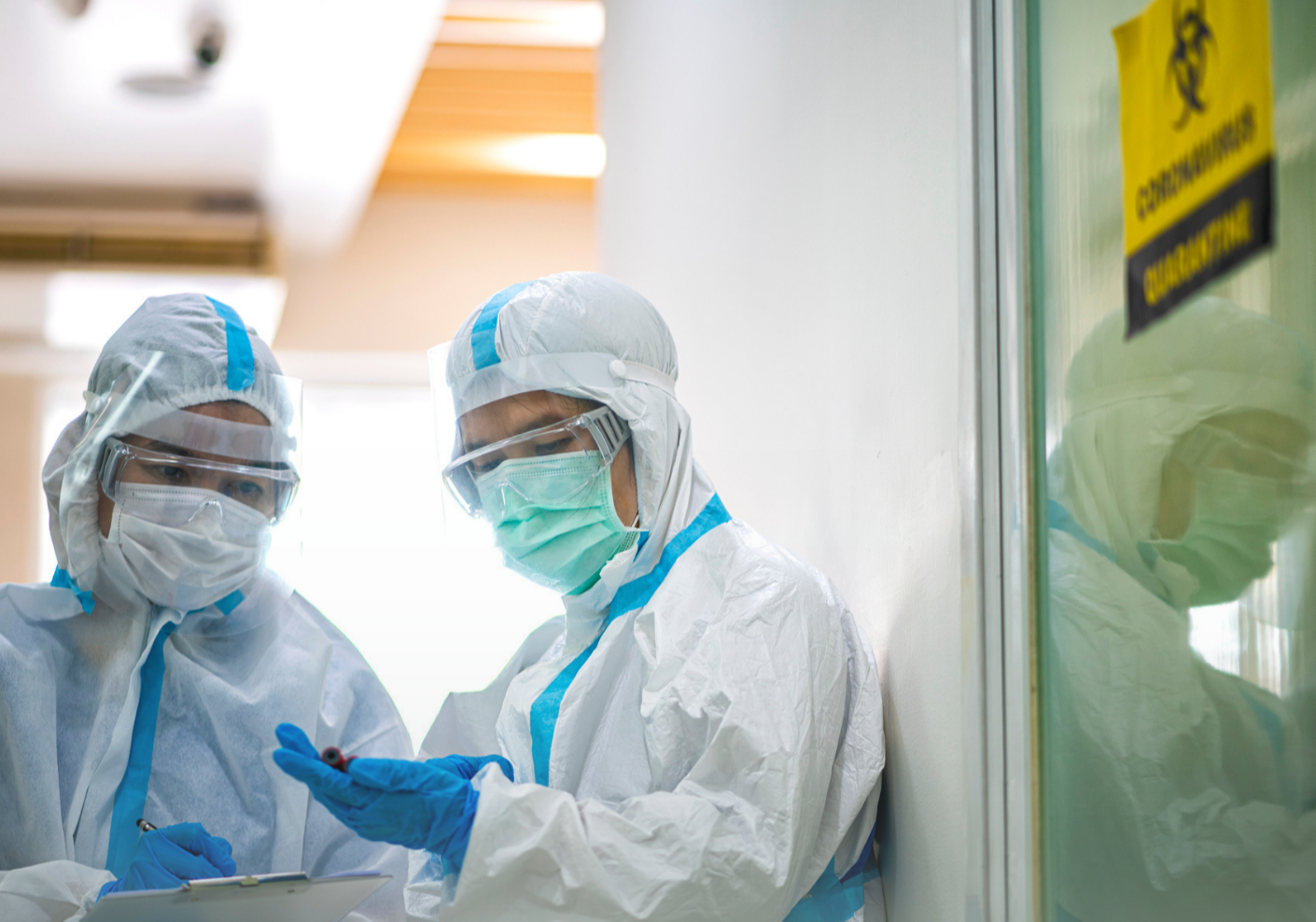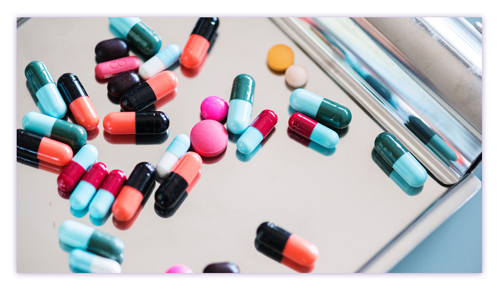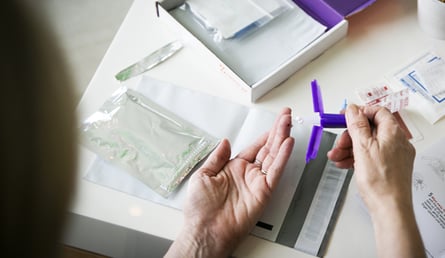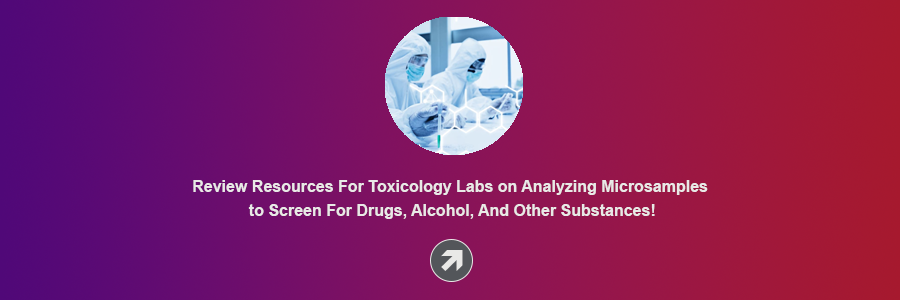Share this
using VAMS with LC-MS/MS for toxicology screening
by James Rudge, PhD, Technical Director, Trajan on Jun 26, 2023 9:00:00 AM
An article by Pascal Houzé et al at four institutions in Paris, France, published in the April 2023 edition of Molecules, outlined the method optimization and validation of a clinical toxicology screening method. The paper is titled “New Trend in Toxicological Screening Using Volumetric Absorptive Microsampling (VAMS) and High-Resolution Mass Spectrometry (HR/MS) Combination.”
The study showed excellent concordance between capillary dried blood and plasma for many of the analytes tested. The researchers highlighted the benefits of using Mitra® devices based on VAMS® technology for finger-prick blood sampling, stating that their novel screening approach is suited to mass screening and opens new insights into different toxicologic fields, including pediatrics and forensics. 
Drug Misuse Is a Global Problem Impacting Toxicology Labs
According to a 2021 report from the World Health Organization (WHO), around 5.5% (275 million) of the world’s population misused drugs at least once in 2019. Out of these, 36.3 million people had drug abuse disorders, resulting in 500,000 global deaths. The WHO found that greater than 70% of the deaths were caused by opioid misuse and 30% were a result of an overdose.
 According to a 2018 report, two thirds of drug deaths were attributed to synthetic opioid use. An opioid of concern is fentanyl, which is reported to be 50 times more potent than heroin in terms of its analgesic properties. The Centers for Disease Control (CDC) reported that the number of deaths from overdose of synthetic opioids increased 18-fold between 2013 and 2020.
According to a 2018 report, two thirds of drug deaths were attributed to synthetic opioid use. An opioid of concern is fentanyl, which is reported to be 50 times more potent than heroin in terms of its analgesic properties. The Centers for Disease Control (CDC) reported that the number of deaths from overdose of synthetic opioids increased 18-fold between 2013 and 2020.
Due to the scale of drug misuse, specialized toxicology laboratories are employed to analyze blood samples from drug overdose patients. These labs also have the capability to analyze samples for workplace testing and sports doping screenings. Recent market reports predict that the global toxicology testing market will be valued in excess of $14 billion by 2025.
Matrices for Drug Testing in Laboratories
Historically, plasma or urine have been the matrices of choice for drug screening. However, analytical methodology, specifically LC-MS/MS, has improved in terms of sensitivity and specificity and, as a result, capillary blood microsamples have become a viable alternative.
Indeed, Pascal Houzé et al, who co-authored the paper reviewed in this blog, stated that dried blood capillary microsamples have several advantages over liquid matrices. Their paper discusses the advantages of dried blood spot, or DBS. They highlighted that microsamples were:
- minimally invasive,
- only small sample volumes were needed,
- they were easy to transport and store.
The authors did, however, comment that due to hematocrit issues, DBS applications were often limited to qualitative methods. Yet, with the development of devices based on volumetric absorptive microsampling technology, the user enjoys all the benefits of DBS without the limitations.
 In terms of capillary blood collection, the newer volumetric sampling tools, such as the Mitra device based on VAMS technology, also give the possibility of “precise sampling regarding the collected volume, independently of the hematocrit value.”
In terms of capillary blood collection, the newer volumetric sampling tools, such as the Mitra device based on VAMS technology, also give the possibility of “precise sampling regarding the collected volume, independently of the hematocrit value.”
Because there is a good body of published data on using Mitra devices with VAMS technology in successful analytical validations, Houzé and research colleagues in France decided to use the Mitra for development and application of a drug screening method.
Toxicology Study Methods and Findings
- The researchers first optimized their extraction method on 10 drug molecules with wide physicochemical properties, at 2 different concentrations (25 and 250 ng/mL1). They found that a mixture of acidified water, acetonitrile and methanol employing sonication followed by agitation gave the most optimal conditions. They also found that the method prevented any possible temporal extraction bias over 72h.
- Next, the group tested their optimized extraction method on 90 compounds (again, wide physicochemical properties as well as different pharmacological classes) to measure both identification limits and extraction yields. As a side note, the group commented that the 90 chosen compounds are commonly found in more than half of their in-patients:
- Only 3.3% of the substances were not detected
- 2% of the compounds were detected below 12.5 ng mL-1 which they deemed to be very satisfactory
- Extraction yields ranged from 80.6% to 108.7%
- 6 molecules were detected above 125 ng µL-1
- The identification limits of 7 compounds were determined to be
<50 ng µL-1 which they considered to be satisfactory. - Finally, the group conducted a clinical evaluation on 15 patients where they compared plasma, whole venous blood, and capillary blood.
- All but 1 patient had detectable drugs in their body
- 14 patients had 1-15 substances detected
- All but 3 patients showed identical drugs in each matrix. However, for 3 patients, diazepam, or ethyl glucuronide, was not detected on Mitra.
- This equated to 119 (R2 = 0.82 comparing Mitra to whole blood) out of 122 compounds detected from Mitra showing a detection efficiency of 98%.
- Only 3.3% of the substances were not detected
Study Authors’ Discussion Highlights
- In the context of the study, the study authors considered the 12.5ng/mL identification limits suitable for clinical toxicology screening.
- High-resolution LC-MS/MS is an ideal analytical method for toxicological screening.
- Unfortunately, there was a lack of detection of cannabinoids and their derivatives, although other groups had shown these did extract from Mitra. The authors surmised that this was because cannabinoids are hydrophobic and the extractant in this study was too aqueous in nature to effectively extract them. Future work will be to create a 2-step extraction so both hydrophilic and hydrophobic analytes will be more easily extracted.
- The patient collection event was conducted by nurses upon admission without the lab staff present to supervise collection.
- Stability of all 90 molecules was found to be at least 72h at room temperature, which was consistent with previous findings reported in the literature.
- The researchers found complete concordance between venous plasma and whole blood and a 2% difference in recovery between whole blood and Mitra.
- It was hypothesized that the low levels of diazepam in the capillary samples were due to a difference between venous and capillary levels, but this would need to be verified with further work.
- The approach seemed reliable due to good concordant data from 15 patients tested.
Microsampling Technology Director Comments
The study by Pascal Houzé et al shows that by investigating the right extraction conditions, robust recoveries can be observed from a wide chemical space of compounds.
Moving from traditional matrices to volumetrically collected whole blood microsamples opens up a greater flexibility as to where and when samples can be collected. For example, finger-stick blood sampling may be a less intrusive way to collect a sample versus being monitored during the process of urine collection.
The study also demonstrated how stable a wide range of drug molecules are in dried blood and how close the data correlated to wet plasma samples.
This article was summarized for our readers by James Rudge, PhD, Microsampling Technical Director. This is curated content. To learn more about the important research outlined in this blog, visit the original article in the journal Molecules.
Image Credits: Shutterstock, Neoteryx, Trajan
Share this
- Microsampling (206)
- Research, Remote Research (119)
- Venipuncture Alternative (105)
- Clinical Trials, Clinical Research (83)
- Mitra® Device (73)
- Therapeutic Drug Monitoring, TDM (51)
- Dried Blood Spot, DBS (39)
- Biomonitoring, Health, Wellness (30)
- Infectious Disease, Vaccines, COVID-19 (24)
- Blood Microsampling, Serology (23)
- Omics, Multi-Omics (21)
- Decentralized Clinical Trial (DCT) (20)
- Specimen Collection (18)
- Toxicology, Doping, Drug/Alcohol Monitoring, PEth (17)
- Skin Microsampling, Microbiopsy (14)
- hemaPEN® Device (13)
- Preclinical Research, Animal Studies (12)
- Pharmaceuticals, Drug Development (9)
- Harpera Device (7)
- Industry News, Microsampling News (5)
- Antibodies, MAbs (3)
- Company Press Release, Product Press Release (3)
- Environmental Toxins, Exposures (1)
- July 2025 (1)
- May 2025 (1)
- April 2025 (2)
- December 2024 (2)
- November 2024 (1)
- October 2024 (3)
- September 2024 (1)
- June 2024 (1)
- May 2024 (1)
- April 2024 (4)
- March 2024 (1)
- February 2024 (2)
- January 2024 (4)
- December 2023 (3)
- November 2023 (3)
- October 2023 (3)
- September 2023 (3)
- July 2023 (3)
- June 2023 (2)
- April 2023 (2)
- March 2023 (2)
- February 2023 (2)
- January 2023 (3)
- December 2022 (2)
- November 2022 (3)
- October 2022 (4)
- September 2022 (3)
- August 2022 (5)
- July 2022 (2)
- June 2022 (2)
- May 2022 (4)
- April 2022 (3)
- March 2022 (3)
- February 2022 (4)
- January 2022 (5)
- December 2021 (3)
- November 2021 (5)
- October 2021 (3)
- September 2021 (3)
- August 2021 (4)
- July 2021 (4)
- June 2021 (4)
- May 2021 (4)
- April 2021 (3)
- March 2021 (5)
- February 2021 (4)
- January 2021 (4)
- December 2020 (3)
- November 2020 (5)
- October 2020 (4)
- September 2020 (3)
- August 2020 (3)
- July 2020 (6)
- June 2020 (4)
- May 2020 (4)
- April 2020 (3)
- March 2020 (6)
- February 2020 (3)
- January 2020 (4)
- December 2019 (5)
- November 2019 (4)
- October 2019 (2)
- September 2019 (4)
- August 2019 (4)
- July 2019 (3)
- June 2019 (7)
- May 2019 (6)
- April 2019 (5)
- March 2019 (6)
- February 2019 (5)
- January 2019 (8)
- December 2018 (3)
- November 2018 (4)
- October 2018 (7)
- September 2018 (6)
- August 2018 (5)
- July 2018 (8)
- June 2018 (6)
- May 2018 (5)
- April 2018 (6)
- March 2018 (4)
- February 2018 (6)
- January 2018 (4)
- December 2017 (2)
- November 2017 (3)
- October 2017 (2)
- September 2017 (4)
- August 2017 (2)
- July 2017 (4)
- June 2017 (5)
- May 2017 (6)
- April 2017 (6)
- March 2017 (5)
- February 2017 (4)
- January 2017 (1)
- July 2016 (3)
- May 2016 (1)
- April 2016 (2)



Comments (2)